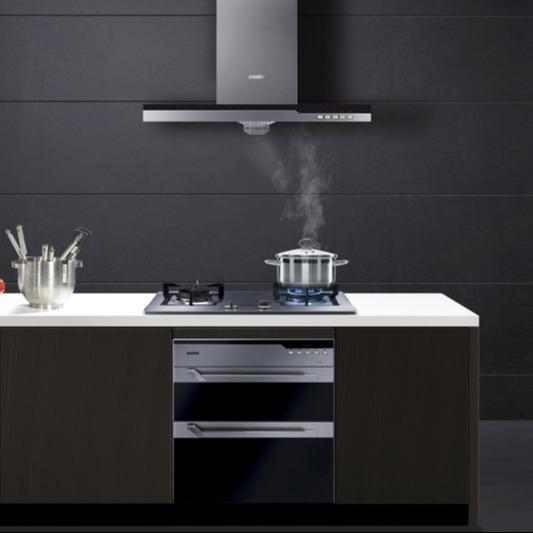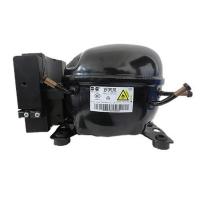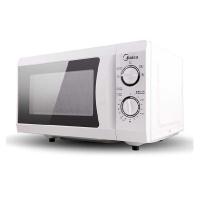Key Features
1. Electrophoretic Paint Primer:
The primer used in this solution is high-quality electrophoretic
paint, known for its excellent corrosion resistance and strong
adhesion properties. This ensures optimal protection for the metal
surfaces of kitchen ventilators and enhances the adhesion of the
finish coat.
2. Powder or Spray Paint Finish:
The finish layer can be applied using either powder coating or
spray painting methods. Both provide smooth, durable, and
high-gloss finishes. Powder coatings are particularly known for
their resistance to abrasion, while spray paints offer a flexible
finish that can cover complex shapes and surfaces.
3. Wide Range of Colors:
The coating solution is available in a variety of colors, including
white, gray, black, and custom colors. This allows manufacturers to
match the aesthetic design of the kitchen ventilator to any kitchen
décor.
4. High-Temperature Resistance:
The coating is specifically formulated to withstand high
temperatures typically encountered in kitchen environments,
ensuring that the coating will not degrade or discolor due to heat
exposure.
5. Anti-Corrosion Protection:
The combination of electrophoretic primer and high-performance
topcoat provides robust corrosion protection, even in humid kitchen
environments where grease and moisture can cause damage to the
surface over time.
6. Durability and Longevity:
The final finish exhibits excellent durability, with strong
resistance to wear, corrosion, and scratching. This ensures that
the kitchen ventilator will maintain its aesthetic appearance and
functionality even with regular use.
Application Instructions
1. Surface Preparation:
The surface should be thoroughly cleaned and pre-treated to remove
any grease, dust, or dirt before applying the primer. This ensures
better adhesion and coating longevity.
2. Primer Application:
Apply a thin and even coat of electrophoretic primer. The primer
should be cured as per the manufacturer's instructions to ensure
proper adhesion and corrosion resistance.
3. Topcoat Application:
After the primer has fully cured, apply the chosen powder or spray
paint finish. Both methods require careful application to ensure a
smooth, even finish with no blemishes. The coating should be baked
or cured to enhance hardness and durability.
4. Drying and Curing:
The final coated product should be allowed to fully cure under the
specified conditions to ensure optimal hardness, durability, and
resistance to wear and corrosion.
Advantages of Kitchen Ventilator Coating Solution
- Environmentally Friendly: The solution is low in VOCs, making it safer for both the
environment and the workers applying the paint.
- Enhanced Aesthetics: The bright and glossy finish enhances the appearance of the
kitchen ventilator, giving it a clean and modern look.
- Long-Lasting Protection: The robust coating ensures that the ventilator remains functional
and visually appealing for an extended period.
- Versatility: Suitable for a variety of kitchen ventilator designs and adaptable
to different metal substrates, including stainless steel, aluminum,
and galvanized surfaces.
The Kitchen Ventilator Coating Solution provides a comprehensive and reliable solution for coating kitchen
range hoods and other metal kitchen appliances. It offers superior
protection against heat, moisture, and corrosion while enhancing
the aesthetic appeal with a smooth, durable finish. With its
environmental friendliness, long-lasting protection, and
customization options, it is an ideal choice for manufacturers
looking to produce high-quality, attractive, and functional kitchen
ventilators.
Support and Services
We will provide the following technical support and services for
all products under the Jingtu Paint brand.
- Assistance with product installation and setup
- Troubleshooting and problem solving
- Guidance on proper use and maintenance
- Training and education on product features and functionality
- Regular software updates and patches
- Integration support with other systems or software
QA
1. What type of paint is used in the Kitchen Ventilator Coating
Solution?
The Kitchen Ventilator Coating Solution utilizes electrophoretic
paint as the primer, which is ideal for providing a durable and
corrosion-resistant base layer. For the finish, powder or spray
paints are applied, depending on the specific application needs.
These finishes offer high gloss, strong adhesion, and excellent
resistance to high temperatures, making them perfect for kitchen
environments.
2. How does electrophoretic paint contribute to the performance of
the coating?
Electrophoretic paint serves as a high-quality primer that offers
superior corrosion resistance, adhesion, and uniform coating. It
enhances the overall durability of the ventilator by providing an
even base layer that prevents rust and degradation, especially
under high-temperature and high-moisture conditions commonly found
in kitchens. This primer also improves the longevity of the overall
coating system.
3. Can this coating solution withstand high temperatures commonly
found in kitchen environments?
Yes, the Kitchen Ventilator Coating Solution is specifically
designed to endure high temperatures typical in kitchen settings.
The powder and spray finishes applied over the electrophoretic
primer are highly heat-resistant and can withstand the constant
exposure to heat and moisture from cooking activities. This ensures
that the coating remains intact and performs well over time.
4. What are the available color options for the kitchen ventilator
coatings?
The coating solution is available in a wide range of colors to suit
different design preferences and kitchen styles. The standard
colors include white, gray, black, and other customizable color
options. This allows for flexibility in matching the kitchen
ventilator with the overall aesthetic of the kitchen, whether you
prefer neutral tones or more vibrant colors.
5. Is the coating resistant to oil and grease buildup?
Yes, the coating provides a smooth and durable finish that resists
oil, grease, and other contaminants typically found in kitchen
environments. This feature makes the kitchen ventilator easier to
clean and maintain, ensuring that the coating stays pristine and
functional for longer periods, even with frequent exposure to
cooking vapors.
6. What is the durability of the Kitchen Ventilator Coating
Solution?
The Kitchen Ventilator Coating Solution is highly durable, offering
excellent protection against wear and tear, scratches, and
high-temperature exposure. The electrophoretic primer, along with
the powder or spray finish, provides long-lasting performance. This
robust coating extends the life of your kitchen ventilator, making
it resistant to fading, chipping, and corrosion over time.









